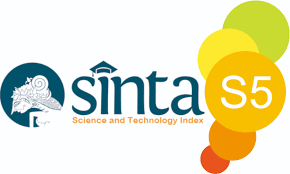Employee Self Service (ESS) Information System at PT. Pilar Timur Teknologi
DOI:
https://doi.org/10.34010/injuratech.v3i2.11882Keywords:
Employee Self Service, Human Resource Management, Information System, Mobile-basedAbstract
A company that is reliable in providing its products or services never escapes the good quality of human resources. These qualities can generally be viewed from the development and maintenance of human resources within the company. In the research conducted at PT. The Eastern Pillar of Technology, the company hopes to maximize service to its employees so that they can focus on working and the level of employee satisfaction can increase. The service in question is oriented towards Human Resource Management, where so far, every bureaucratic, administrative, and recapitulation process related to human resources has not been fully recorded and optimally documented. For example, on its implementation, employees who want to apply for leave or permission will be faced with a long bureaucratic process. On the other hand, employees must also confirm to the Human Resource Management party whether they still have leave and permit allotments or not. This causes problems in some conditions, where the occurrence of employee indiscipline in applying for leave or permits. In addition to the application and attendance process that is still done manually, it causes inconsistencies or errors in the recap of employee data. That have a bad impact on the calculation of the payroll that will be carried out. Mobile-based Employee Self Service plays an important role in solving these problems because it can display accurate data and reports for each employee, both in terms of permits, leave, overtime, attendance or even payroll calculations. This research was conducted using a descriptive research method with a data collection method through interviews and observations on the object of study. For the system development method used, the author used the prototype development method with Unified Modelling Language modelling. While in prototype development, the author uses kotlin and MySQL programming languages for his database. The result is the construction of Employee Self Service with the aim of providing easier access for employees in utilizing the facilities provided by the company, as well as minimizing errors and omissions that may occur in the employee service process.
References
[2] Vakulenko, Y., Oghazi, P., & Hellström, D. (2019). Innovative framework for self-service kiosks : Integrating customer value knowledge. Journal of Innovation and Knowledge, 4(4), 262-268.
[3] Sousa, C. M., Coelho, F., & Guillamon-Saorin, E. (2012). Personal Values, Autonomy, and Self-efficacy: Evidence from frontline service employees. International Journal of Selection and Assessment, 20(2), 159-170.
[4] Konradt, U., Christophersen, T., & Schaeffer-Kuelz, U. (2006). Predicting user satisfaction, strain and system usage of employee self-services. International Journal of Human-Computer Studies, 64(11), 1141-1153.
[5] Margatama, L. (2017). Employee Self Service-based Human Resources Information System Development and Implementation. Case Study: BCP Indonesia. Jurnal Informatika, 11(1), 52-60.
[6] Ridwan, M. (2019). Employee Self Service (ESS) Online in PT. Data Utama. International Journal of Engineering Technologies and Management Research, 6(10), 59-64.
[7] Ardiansah, E. A. (2019). Company Profile Kombinasi ESS (Employee Self Service) dan CSS (Customer Self Service) PT. Dewasutratex berbasis Web Menggunakan Ruby On Rails dengan Metode Waterfall. Jurnal Teknologi Informasi dan Komunikasi, 8(1), 12-19.
[8] Kent, J. (2014). Aplikasi employee self service dan perancangan basis data pada sistem penggajian PT. Syntesis Karya Pratama = Employee self service application and database design of payroll system PT. Syntesis Karya Pratama. Tanggerang: Universitas Pelita Harapan.
[9] Purnomo, D. (2017). Model Prototyping Pada Pengembangan Sistem Informasi. Jurnal Informatika Merdeka Pasuruan, 2(2), 54-61.
[10] Gargenta, M. (2011). Learning Android. California: O'Reilly Media, Inc.
[11] Wojda, I., & Moskala, M. (2017). Android Development with Kotlin. Birmingham: Packt Publishing Ltd.
[12] Drongelen, M. v. (2015). Android Studio Cookbook. Birmingham: Packt Publishing Ltd.
[13] Smyth, N. (2018). Android Studio 3.2 Development Essentials - Kotlin Edition: Developing Android 9 Apps Using Android Studio 3.2, Kotlin and Android Jetpack. North Carolina: Payload Media Inc.
[14] Moroney, L. (2017). The Definitive Guide to Firebase: Build Android Apps on Google's Mobile Platform. New York: Apress.
[15] Rouf, A., & Riyanto, E. (2012). Pengujian perangkat lunak dengan menggunakan metode white box dan black box. Himsya Tech, 8(1), 13-21.











